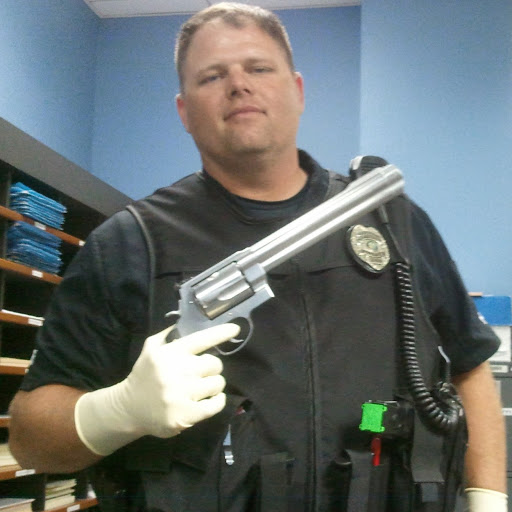Jerry B Monroe
age ~75
from Peoria, AZ
- Also known as:
-
- Jerry N Monroe
- Jerry R Monroe
- Jerry B Monco
- Jerry B Monrow
- Jaclyn Monroe
- Jerry W
- Phone and address:
- 8335 La Caille, Peoria, AZ 85345
Jerry Monroe Phones & Addresses
- 8335 La Caille, Peoria, AZ 85345
- 7405 Banff Ln, Peoria, AZ 85381
- Munds Park, AZ
- Glendale, AZ
- Phoenix, AZ
- Avon, IN
Work
-
Company:Premier manufactured systs inc
-
Address:17431 N 25Th Ave, Phoenix, AZ 85023
-
Phones:6239311977
-
Position:Ceo
-
Industries:Beauty Shops
Specialities
Business Law • Contracts • Mergers and Acquisitions
Resumes

Jerry Monroe
view source
Jerry Monroe
view source
Jerry Monroe
view source
Jerry Monroe
view source
Jerry Monroe
view source
Jerry Monroe
view source
Jerry Monroe
view source
Jerry Monroe
view sourceName / Title
Company / Classification
Phones & Addresses
CEO
Premier Manufactured Systs Inc
Beauty Shops
Beauty Shops
17431 N 25Th Ave, Phoenix, AZ 85023
CEO
Premier Manufactured Systs Inc
Beauty Shops
Beauty Shops
17431 N 25 Ave, Phoenix, AZ 85023
6239311977
6239311977
Manager
NANJER FAMILY, LLC
7405 W Banff Ln, Peoria, AZ 85381
Principal
Nanjer Family
Business Consulting Services
Business Consulting Services
8335 W Ln Caille, Peoria, AZ 85383
Us Patents
-
Thermoelectric Water Pre-Cooling For An Evaporative Cooler
view source -
US Patent:6418728, Jul 16, 2002
-
Filed:May 10, 2000
-
Appl. No.:09/568610
-
Inventors:Jerry Monroe - Peoria AZ 85381
-
International Classification:F25B 2102
-
US Classification:62 32, 62310
-
Abstract:The operational range of the evaporative cooler means, particularly one chilling air and/or water to 79Â F. or less when the outside ambient air temperature rises to 120Â F. at a relative humidity as high as 50%, is extended by pre-cooling the intake water with a thermoelectric heating/cooling element, typically of about 5 kw. capacity. The extension of the operational range of the evaporative cooler so realized obviates, or reduces, use of an expensive parallel air conditioning system in the cooling of buildings, particularly houses, in hot but generally dry climates, such as in the inland regions of the Southwestern United States.
-
Monolithically-Molded Subassemblies For Retrofitting Existing Ro Systems To Zero Waste
view source -
US Patent:6524472, Feb 25, 2003
-
Filed:Mar 12, 2001
-
Appl. No.:09/804706
-
Inventors:Jerry Monroe - Peoria AZ
-
Assignee:Watts Regulator Co. - North Andover MA
-
International Classification:B01D 6110
-
US Classification:210 90, 210 97, 210232, 2103216, 137798, 13731501
-
Abstract:Monolithically-molded subassemblies ( ) are used to retrofit existing reverse osmosis systems into zero waste RO systems. The subassemblies reduce the number of connections necessary such that the retrofitting may be accomplished by unskilled labor. The subassemblies may be integrally packaged together on a backboard and are placed in-line in the inlet to the RO unit and in each of the outlets from the RO unit. For example, the first subassembly (FIG. ) includes an input port for connecting to source of water to be purified, an first portal communicating with a pressure switch, a second portal communicating with a pressure gauge and an output port communicating with the RO unit inlet. Using the subassemblies, the retrofit most typically requires only six connections thereby simplifying system installation, improving system reliability, and extending system longevity.
-
Method Of Retrofitting An Existing Ro System To Zero Waste
view source -
US Patent:6524483, Feb 25, 2003
-
Filed:Mar 12, 2001
-
Appl. No.:09/804712
-
Inventors:Jerry Monroe - Peoria AZ
-
Assignee:Watts Regulator Co. - North Andover MA
-
International Classification:B01D 6110
-
US Classification:210652, 137 1501
-
Abstract:Diverse existing non-zero waste reverse osmosis systems are retrofittable by unskilled labor to become zero waste by a method using integrally-packaged subassemblies ( ) placed in-line in the inlet to the RO unit and in each of the outlets from the RO unit. Using the subassemblies, the retrofit most typically requires only six connections thereby simplifying system installation, improving system reliability, and extending system longevity.
-
Water-Conserving Pressure-Maintaining Reverse Osmosis System
view source -
US Patent:56393741, Jun 17, 1997
-
Filed:Nov 19, 1993
-
Appl. No.:8/156861
-
Inventors:Jerry B. Monroe - Peoria AZ
John K. Hemingway - Phoenix AZ -
Assignee:Premier Manufactured Systems, Inc. - Phoenix AZ
-
International Classification:B01D 6112
-
US Classification:210637
-
Abstract:A reverse osmosis water purification system in which the concentrate water normally produced by the process is not disposed of by routing it to a drain line or otherwise, but is redirected to the main water supply. The system includes the well-known components of a reverse osmosis membrane, pre-filters which are installed ahead of the reverse osmosis membrane, and an appropriate tank to store the purified water. In addition, the system includes a pump and associated pressure sensing device for increasing the pressure of the incoming non-processed water to the reverse osmosis unit, and a pipe to carry the concentrate water from the reverse osmosis unit to the incoming main water supply, be it either a cold or hot water line. Additionally included is a one-way check valve in the concentrate water line, and a sensing device in the purified water storage tank to turn the pump off whenever the quantity of water in the tank exceeds a predetermined amount.
-
Water Conserving Reverse Osmosis Unit And Method Of Operating It
view source -
US Patent:58795588, Mar 9, 1999
-
Filed:Jun 13, 1997
-
Appl. No.:8/874829
-
Inventors:Jerry B. Monroe - Peoria AZ
John K. Hemingway - Phoenix AZ -
Assignee:Premier Manufactured Systems, Inc. - Phoenix AZ
-
International Classification:B01D 6112
B01D 6110 -
US Classification:210637
-
Abstract:A reverse osmosis water purification system in which the concentrate water which is normally produced by the process is not disposed of by routing it to a drain line or otherwise, but is redirected to the main water supply. The system includes the well-known components of a reverse osmosis membrane, pre-filters which are installed ahead of the reverse osmosis membrane, and an appropriate tank to store the purified water. In addition, the system includes a pump and associated pressure sensor for increasing the pressure of the incoming non-processed water to the reverse osmosis unit, means for directing the concentrate water from the reverse osmosis unit to the incoming main water supply (cold), or to a hot water line. Additionally included is a one-way check valve in the concentrate water line, and a sensor sensing the pressure of water in the storage tank and turn the pump off whenever the pressure exceeds a predetermined value.
-
Drinking Fountain
view source -
US Patent:D3433307, Jan 18, 1994
-
Filed:Jun 30, 1992
-
Appl. No.:7/905648
-
Inventors:Wayne T. Windenburg - Phoenix AZ
Jerry B. Monroe - Peoria AZ -
Assignee:Premier Manufactured Systems, Inc. - Phoenix AZ
-
US Classification:D 7304
-
Compact Water-Conserving Kitchen Water Station With Sink For Supplying Copious Purified Water, Particularly For Restaurants
view source -
US Patent:59763639, Nov 2, 1999
-
Filed:Oct 11, 1996
-
Appl. No.:8/729772
-
Inventors:Jerry Monroe - Peoria AZ
Wayne Windenburg - Phoenix AZ -
International Classification:B01D 1712
B01D 6110 -
US Classification:210 90
-
Abstract:A water station, or cabinet, or console, particularly for use in kitchens and in restaurant kitchens and in oriental restaurant kitchens, contains (i) a reverse osmosis system, and (ii) a sink. The water cabinet dispenses copious amounts of (i) water purified by reverse osmosis ("RO water"), as well as (ii) tap, or supply, water and (iii) waste water from the reverse osmosis (RO) process, respectively from three faucets in position over the sink. The cabinet is compact: it fits within the footprint of, and replaces, a conventional restaurant sink. The RO water purification performed by the RO system completely within the cabinet is water-conserving, typically producing RO purified water and waste water at a ratio as low as one-to one (1:1) by using an adjustable feedback path for waste water. Operational status is clearly visible. Maintenance is easy, with sediment filters replaceable on-line.
-
Counter Top Reverse Osmosis System
view source -
US Patent:54457297, Aug 29, 1995
-
Filed:Oct 7, 1993
-
Appl. No.:8/132786
-
Inventors:Jerry B. Monroe - Peoria AZ
Jon S. Ford - Phoenix AZ
James A. Monroe - Phoenix AZ -
Assignee:Premier Manufactured Systems, Inc. - Phoenix AZ
-
International Classification:B01D 1712
-
US Classification:210 86
-
Abstract:A reverse osmosis (RO) unit uses a membrane permitting operation at abnormally low water pressures, typically as low as 10 PSI. Because any requirement for a pump to boost inlet water pressure is obviated, the RO unit makes do with only one, small and compact, outlet pump. An optional single, or a dual-channel dual-pass, ultraviolet (UV) light source sterilizes filtered inlet, and/or the purified output, water flows. Purified water is stored at atmospheric pressure in a simple storage bag, and is dispensed on demand by force of the outlet pump. The entire RO unit--storage bag, pump, filters, UV sterilizer, membrane and all--is preferably entirely integrally packaged in a compact and aesthetically pleasing cylindrically-shaped housing. The RO unit so housed is suitably deployed on a household counter top while flow-connected to normal household plumbing--typically to the faucet and drain of a kitchen sink--and while electrically connected to normal household power. The RO unit is operative to purify water in the event of an emergency or power emergency on solar or battery power, and is even operative in the complete absence of electrical power, such as after an earthquake or other emergency, by manual disconnection or bypass of its inlet solenoid valve.
Lawyers & Attorneys

Jerry Monroe - Lawyer
view sourceOffice:
Law Offices of Jerry W. MonroeProfessional Corporation
Specialties:
Business Law
Contracts
Mergers and Acquisitions
Contracts
Mergers and Acquisitions
ISLN:
902418439
Admitted:
1967
University:
Columbia University, A.B., 1959
Law School:
University of Utah, J.D., 1966
Googleplus

Jerry Monroe

Jerry Monroe

Jerry Monroe

Jerry Monroe

Jerry Monroe

Jerry Monroe

Jerry Monroe

Jerry Monroe
Plaxo

jerry monroe
view sourceMonroe metalworking Machinery LLC

Jerry Monroe
view sourcePast: President at Excel Oil Inc.

Jerry Monroe
view sourceRoane County High School
Youtube
Classmates

Jerry Monroe
view sourceSchools:
Monroeville High School Monroeville IN 1964-1968

Jerry Monroe
view sourceSchools:
Monroeville High School Monroeville IN 1964-1968

Jerry Monroe
view sourceSchools:
Silver Grove High School Silver Grove KY 1954-1955
Community:
Nancy King, Rod Mays, Kenneth Demoss, Edna Jones

Jerry Monroe
view sourceSchools:
Center High School Gabbettville GA 1990-1994
Community:
Stella Nguyen

Jerry Monroe
view sourceSchools:
Chimacum High School Chimacum WA 1977-1981
Community:
Kathryn Heassler

Jerry Monroe
view sourceSchools:
Southern Pines High School Southern Pines NC 1963-1967
Community:
Jesse Willcox, Pete Marco, Elizabeth Coppedge, Jean Edwards

Jerry Monroe
view sourceSchools:
Pilgrim High School Warwick RI 1965-1969
Community:
Mickey Murphy, Frederick Renzi

Jerry Monroe
view sourceSchools:
Moorhead High School Moorhead MN 1977-1981
Community:
Charles Pinkney, Brian Johnson, Celia Heringman, Pamela Schubloom, Jon Hanson, Tacy Watson, Jan Honek, Randy Baumer, Bob Holmstead, Patty Fairbanks, Brenda Haugen

Jerry L. Monroe
view source
Jerry Monroe
view source
Jerry Monroe
view source
Jerry Hunter Monroe
view source
Jerry Monroe
view source
Jerry Monroe
view source
Jerry Monroe
view source
Jerry Monroe
view sourceFlickr
Myspace
Get Report for Jerry B Monroe from Peoria, AZ, age ~75

















